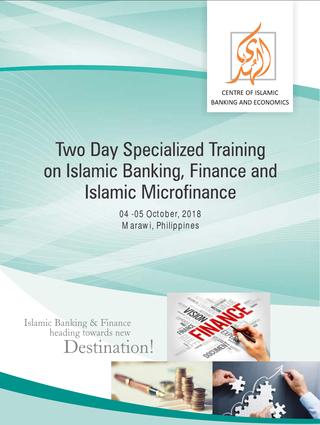Contents:


For one, it is important to note that interest coverage is highly variable when measuring companies in different industries and even when measuring companies within the same industry. For established companies in certain industries, like a utility company, an interest coverage ratio of 2 is often an acceptable standard. Other industries, such as manufacturing, are much more volatile and may often have a higher minimum acceptable interest coverage ratio, like 3.

You will also learn how to carry out vertical analysis using both an income statement and a balance sheet. Horizontal AnalysisHorizontal analysis interprets the change in financial statements over two or more accounting periods based on the historical data. It denotes the percentage change in the same line item of the next accounting period compared to the value of the baseline accounting period. A common size financial statement allows for easy analysis between companies or between periods for a company.
Examples of Horizontal Analysis
For each account on the income statement, we divide the given number by the company’s sales for that year. While horizontal analysis is concerned with variable change over time, vertical analysis focuses on the proportion each item represents for the whole amount in a single period. Hence why it’s called vertical analysis – you add your calculations vertically next to each item.
So if we had multiple years of historical data, it is recommended to organize the percentage calculations into a single section on the far right or below the financials with the timing of the periods aligned. The accounting conventions are not followed vigilantly in the vertical analysis. Financial analysis is the process of assessing specific entities to determine their suitability for investment. To get started with vertical analysis in LiveFlow, all you need to do is connect your data sources and build your reports.

Return on equity deemed good or bad will depend on what’s normal for a stock’s peers. For example, utilities will have a lot of assets and debt on the balance sheet compared to a relatively small amount of net income. A technology or retail firm with smaller balance sheet accounts relative to net income may have normal ROE levels of 18% or more.
Chapter17: Analysis of Financial Statements
The proportion of fixed assets and current assets to the total assets is 35.88%. The proportion of fixed assets and current assets to the total assets is 37.47%. The proportion of fixed assets and current assets to the total assets is 25.06%.

Because companies express net profit margin as a percentage rather than a dollar amount, it is possible to compare the profitability of two or more businesses regardless of size. Without an adequate gross margin, a company cannot pay for its operating expenses. In general, a company’s gross profit margin should be stable unless there have been changes to the company’s business model. For example, when companies automate certain supply chain functions, the initial investment may be high; however, the cost of goods sold is much lower due to lower labor costs. Common-size financial statements are also useful in comparing different companies. Exhibit 17.13 shows common-size graphics of RIM, Apple and Nokia on financing sources.
Income Statement Example
When you conduct vertical analysis, you analyze each line on a financial statement as a percentage of another line. On an income statement you conduct vertical analysis by converting each line into a percentage of gross revenue. On a balance sheet you would typically state each line as a percentage of total assets. Vertical analysis can be used with both income statements and balance sheets, with every line item on the financial statement entered as a corresponding percentage of the base item.
- Inventory turnover provides insight as to how the company manages costs and how effective their sales efforts have been.
- It is a management tool used by companies in analyzing the changes in the relative size of different accounts over several years.
- Operating margin should only be used to compare companies that operate in the same industry, and ideally have similar business models and annual sales.
- In this example, the business’s variable expenses have trended downward over the three-year period.
- Though a useful tool on its own, vertical analysis can be a more useful tool when used in conjunction with horizontal analysis.
- For a company, the ROCE trend over the years is also an important indicator of performance.
When, only a year ago in 2013, Sale Return and Allowances was only 7%, meaning that there is most likely more instances of defective items. Then, consider that in 2014, 50% of Cost of Goods Sold was 50% where it was 55% a year ago. In our sample Balance Sheet, we want to determine the percentage or portion a line item is of the entire category.
Inventory conversion ratio
These percentages are considered common-size because they make businesses within industry comparable by taking out fluctuations for size. It is typical for an income statement to use revenue as the comparison line item. This means revenue will be set at 100% and all other line items within the income statement will represent a percentage of revenue. You now know about the vertical analysis of financial statements and how it differs from the horizontal analysis. You know how to do a vertical analysis with Excel and Google Sheets, using both an income statement and a balance sheet. When you use total assets in the denominator, look at each balance sheet item as a percentage of total assets.
Vertical analysis is a form of financial statement analysis that assesses the relative size of different line items on a balance sheet, income statement, or statement of cash flows to one another. For instance, it expresses each item on an income statement as a percentage of total sales. It is also known as a common-size analysis, because it expresses each item as a fraction of a shared base figure. Vertical analysis is a type of ratio analysis that presents each line on the financial statements as a percentage of another item. For example, on the income statement, if the base chosen is revenue, then each line item would be expressed as a percentage of revenue.
Calculate Line Items as % of Total
The information https://1investing.in/d by this income statement format is useful not only for spotting spikes in expenses, but also for determining which expenses are so small that they may not be worthy of much management attention. Because we entered our costs and expenses as negatives, i.e. to reflect that those items are cash outflows, we must place a negative sign in front when applicable, so that the percentage shown is a positive figure. With our financial data presented in Excel, we can start to calculate the contribution percentages on either the side or below the income statement. Suppose we’ve been tasked with performing vertical analysis on a company’s financial performance in its latest fiscal year, 2021. Example of the vertical analysis of the financial statement, which shows the total amount and percentage. Vertical analysis is most commonly used within a financial statement for a single reporting period, e.g., quarterly.
Since these proportions are double entry accountings, you can easily compare them to other time periods or other companies. Notice that the column presenting the ratio of each line item to gross sales is to the right of the actual values. Sometimes, financial statements are prepared in this way by the provider but often FP&A analysts will utilize their own basis depending on what information they are trying to understand. By showing each line item as a percentage of an important total this allows analysts to quickly identify correlations, while simultaneously making it easier to compare various companies across the same sector. That is because this approach quickly reveals the proportion of various account balances reflected in the financial statements. To start, the table below shows the company’s historical financial statements – the income statement and balance sheet – of our hypothetical company, which we’ll be using throughout our two-part exercise.
Despite Success, Merger Remedies Face Increased Skepticism at … – American Action Forum
Despite Success, Merger Remedies Face Increased Skepticism at ….
Posted: Tue, 14 Feb 2023 08:00:00 GMT [source]
The amounts from the most recent years will be divided by the base year amounts. For instance, if a most recent year amount was three times as large as the base year, the most recent year will be presented as 300. If the previous year’s amount was twice the amount of the base year, it will be presented as 200. Seeing the horizontal analysis of every item allows you to more easily see the trends.
The metric calculates a company’s ability to pay current liabilities using only cash and cash equivalents on hand. If the company is forced to pay all current liabilities immediately, this metric shows the company’s ability to do so without having to sell or liquidate other assets. A figure of 1 is considered to be the normal quick ratio, as it indicates that the company is fully equipped with sufficient assets that can be instantly liquidated to pay off its current liabilities. For instance, a quick ratio of 1.5 indicates that the company has $1.50 of liquid assets available to cover each $1 of its current liabilities. Trend percents are shown on comparative income statements and balance sheets, shown on common-size comparative statements, or also called index numbers.
Perhaps they have not been able to collect from their customers quickly which may be hidden in the current ratio. Analysts must also consider the quality of a company’s other assets versus its obligations as well. If inventory is unable to be sold, the current ratio may still look acceptable, but the company may be headed for default.
In the 3rd year, the COGS decreased compared to the previous years, and the income increased. A common size income statement is an income statement in which each line item is expressed as a percentage of the value of sales, to make analysis easier. To calculate vertical analysis, you will need to know the total revenue figure for the income statement. Days sales outstanding is a measure of the average number of days that it takes a company to collect payment after a sale has been made. Operating performance ratios are tools which measure the function of certain core operations for an organization or business. Particularly, these ratios reveal information about how efficiently that organization is using resources to generate sales and cash.
